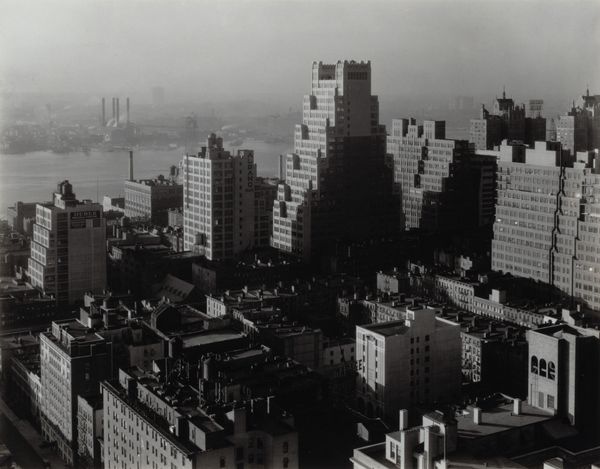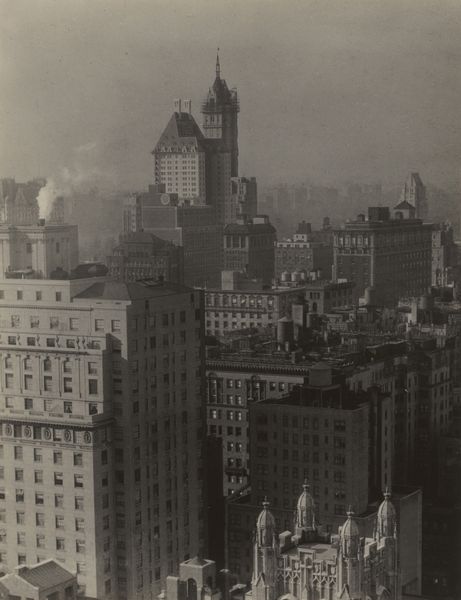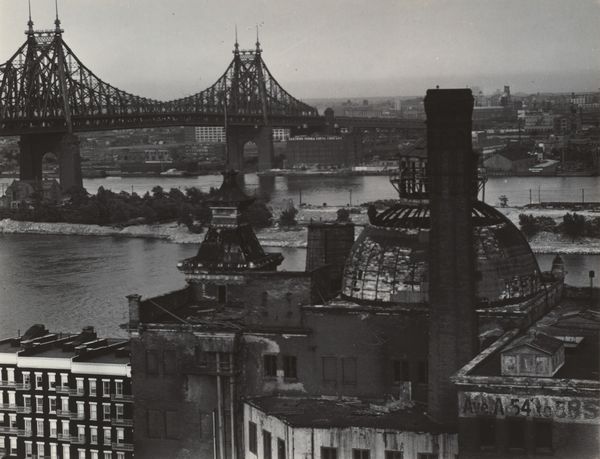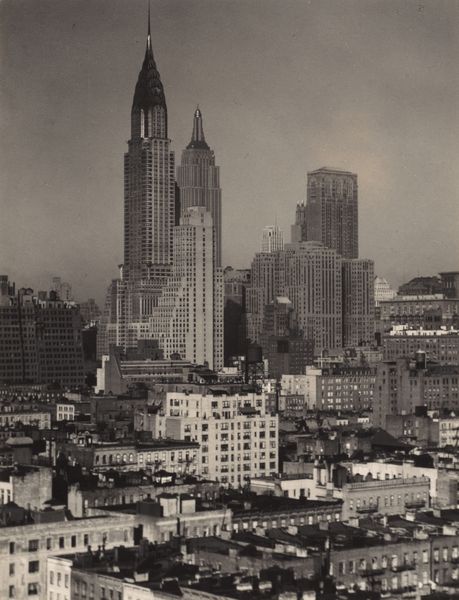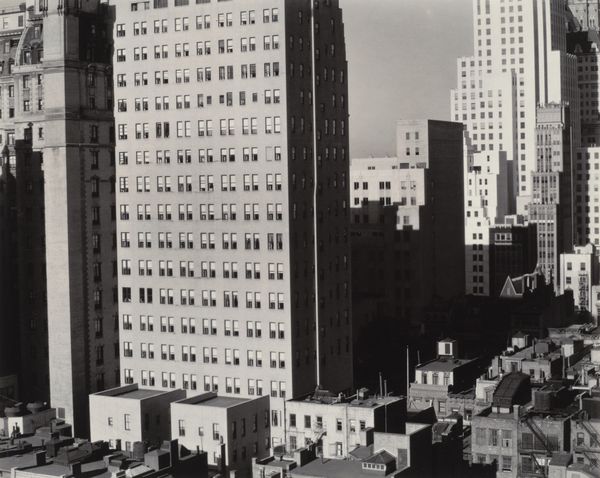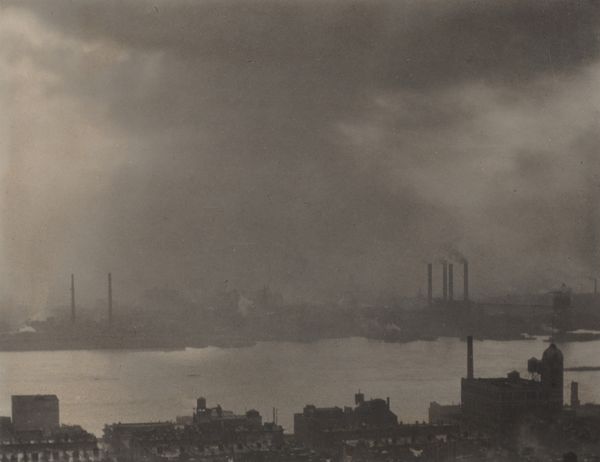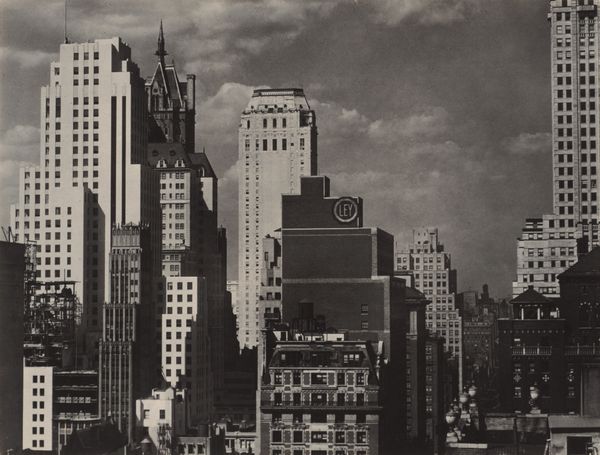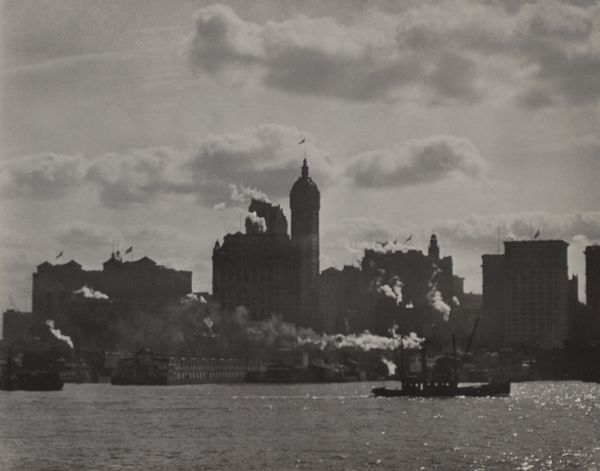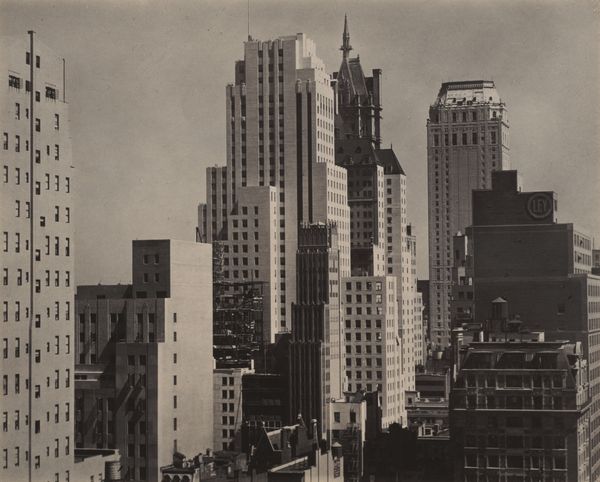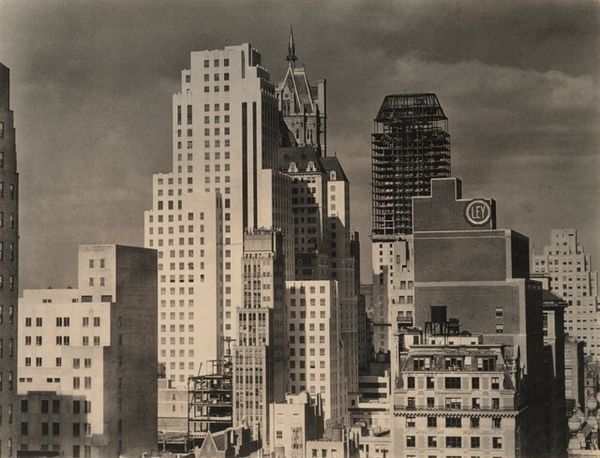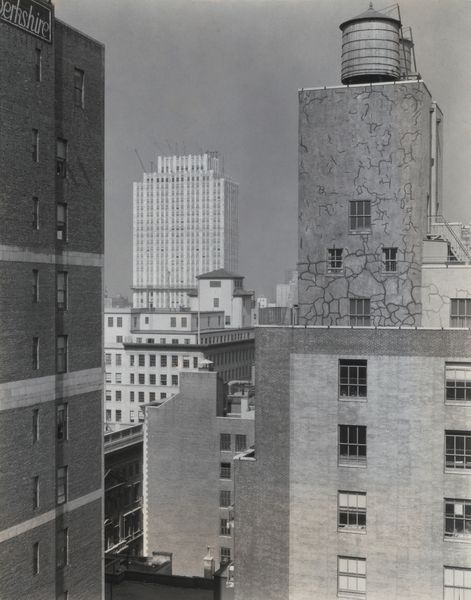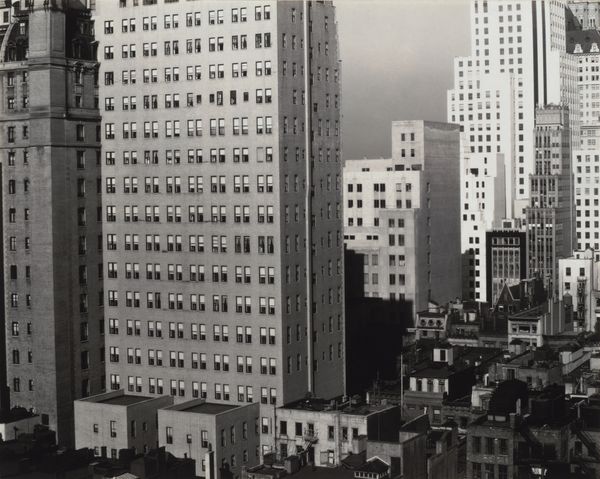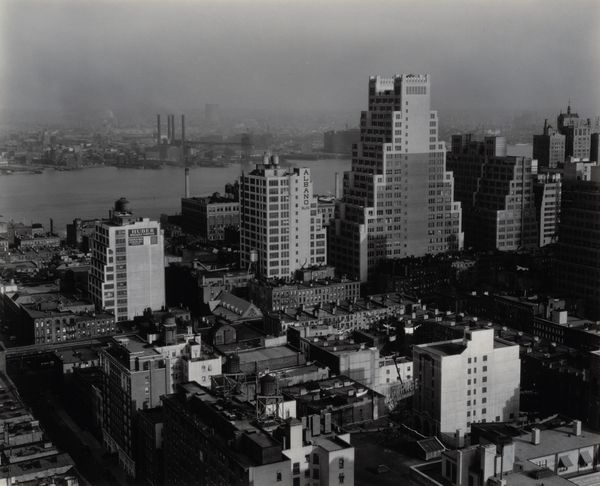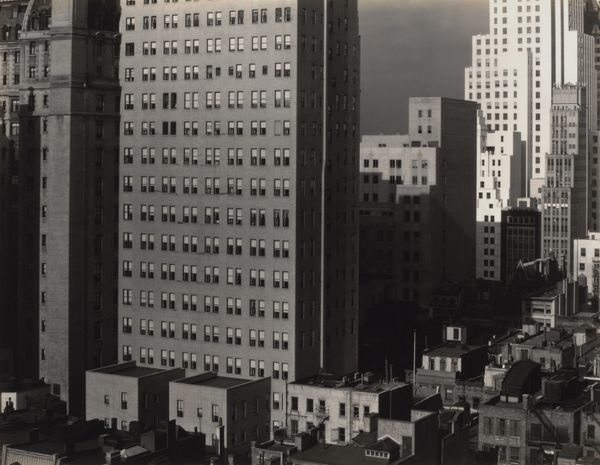
From the Shelton, New York (Room 3003) Looking Southeast 1927
0:00
0:00
photography, gelatin-silver-print
#
black and white photography
#
outdoor photograph
#
black and white format
#
photography
#
gelatin-silver-print
#
monochrome photography
#
street photography
#
cityscape
#
monochrome
#
modernism
Dimensions: sheet (trimmed to image): 8.8 x 11.5 cm (3 7/16 x 4 1/2 in.) mount: 34.3 x 27.3 cm (13 1/2 x 10 3/4 in.)
Copyright: National Gallery of Art: CC0 1.0
Editor: This gelatin silver print, "From the Shelton, New York (Room 3003) Looking Southeast," taken by Alfred Stieglitz in 1927, depicts an impressive cityscape. It almost feels like an inventory of the built environment of that time. What strikes you most about it? Curator: I notice immediately the stark contrast between the old and new. The traditional, low-lying buildings seem dwarfed by the towering Shelton Hotel and, even more oppressively, the industrial smokestacks looming in the background. It speaks volumes about the social and economic shifts happening in New York at that time, doesn't it? The way the photograph flattens the space also draws attention to the materiality of the city itself. What do you make of that industrial presence? Editor: I hadn’t considered the “inventory” aspect relating to industrial capacity so directly. I suppose those smokestacks also signal labor conditions, the physical realities of producing goods and services. The city is made of materials, yes, but also the people making all that progress. It's like a power dynamic is at play. Curator: Precisely! Think about who benefits from this 'progress' and who bears the burden. Stieglitz, positioned high above in a luxury hotel, frames this scene. Consider his position in this network of labor and consumption. Is he a detached observer, or a participant complicit in the systems he documents? Editor: That's fascinating – so by looking at what is shown, and also from where it is shown, we can start to understand the processes of material creation and the societal implications around that? It's more than just an architectural photograph then. Curator: Exactly. By analyzing the materiality of the photograph itself – the gelatin silver print – and juxtaposing it with the subject matter, we can gain a richer understanding of the social and economic fabric of the era. Editor: Thank you, I see so much more now when I consider not just what it depicts but what went into creating it. Curator: And that’s the crucial starting point. Seeing how everything connects.
Comments
No comments
Be the first to comment and join the conversation on the ultimate creative platform.
